Table of Contents
Get the Most Out of Your Workouts with Proper Form!
Introduction
Proper form for workouts is essential for achieving the best results and avoiding injury. Be it cycling, weight-lifting, running, or any other exercises you may like. It is important to understand the correct form for each exercise and to practice it consistently. Proper form helps to ensure that the muscles are being worked correctly and that the exercise is being performed safely. It also helps to maximize the effectiveness of the exercise and to ensure that the desired results are achieved.
This article is the first in a series that will provide an overview of proper form for various exercises. Here, we concentrate on the common strength exercises, namely the squats, deadlifts and push-ups.
Importance of Proper Form During Workouts
Good posture is essential for any workout routine. Not only does it help you look your best, but it also helps you get the most out of your workout. Proper posture during exercise helps you to move more efficiently, reduces the risk of injury, and in the end helps you to achieve better results. A study released by the National Strength and Conditioning Association shows detailed analyses of body mechanics for strength training workouts.
First, proper form will help you maximize the effectiveness of your workout. When you use proper form, you are able to target the muscles you are trying to work out more effectively. This means that you will be able to get the most out of your workout in the shortest amount of time.
Second, proper form will help you avoid injury. When you use improper form, you are more likely to strain or pull a muscle. This can lead to serious injury and can even put you out of commission for a while. By using proper form, you can avoid these types of injuries and stay safe while you work out.
Finally, proper form will help you build strength and muscle more quickly. When you use proper form, you are able to lift heavier weights and target the muscles you are trying to work out more effectively. This means that you will be able to build strength and muscle more quickly than if you were using improper form.
So, how do you maintain proper posture during your workouts? In general, make sure that your head is in line with your spine. Your shoulders should be back and down, and your chest should be lifted. Your core should be engaged and your hips should be in line with your shoulders. Finally, make sure that your feet are firmly planted on the ground. I try to follow these simple but effective steps in my various workouts.
It’s also important to pay attention to your breathing. Make sure that you are taking deep breaths and exhaling fully. This will help you to maintain good posture and keep your muscles relaxed.
Most importantly, listen to your body. Make sure that you are taking regular breaks to help to prevent fatigue and to keep your posture in check. Stop the activity you are doing if you feel pain or discomfort. Seek professional help to avoid serious injury. Your body will thank you!
Proper Squat Form for Maximum Results
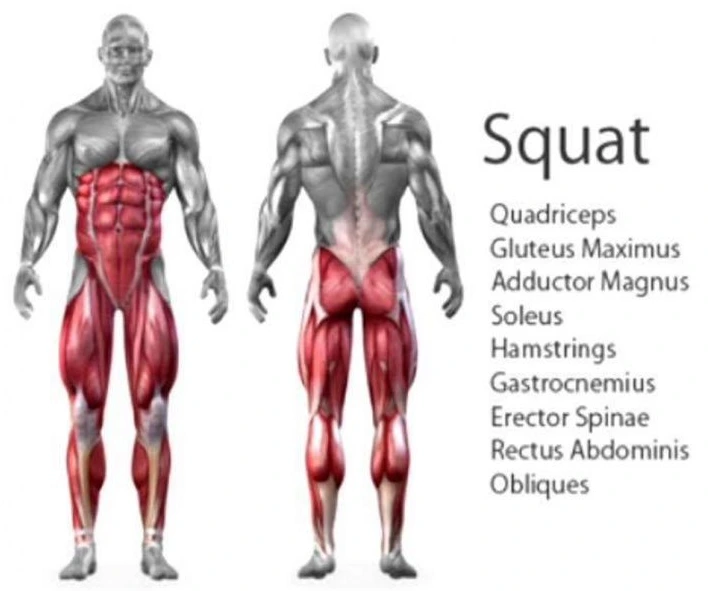
Squats are one of the best exercises for building strength and muscle, and with the right form, you can maximize your results. The squats is important from a functional standpoint. Ability to perform common everyday movements such as trying to sit on a chair/ sofa, or getting up from one, or climbing stairs can be attributed to the squats and lower back.
It works the core, and the entire lower body. It activates big muscle groups – the quadriceps, hamstrings, obliques, and the adductor muscles. From a mobility standpoint, it helps the knees and ankles develop and maintain “flexibility” by building the surrounding support muscles. Explosive movements such as sprinting and jumping needs strong quads and hamstrings, in addition to other smaller surrounding muscles. So it is recommended that squats be incorporated into your workouts.
Here are some tips to help you improve your squat form for maximum results. The normal “air” squats form is listed below. This is an easier variation without additional weights. This is good for all strength levels. Experienced athletes use this as a warm up. People getting into fitness use this to strengthen their quads, glutes, and mobility in the knees and ankles.
Feet Placement
Pay attention to your feet placement during the workouts as these affect your performance directly.
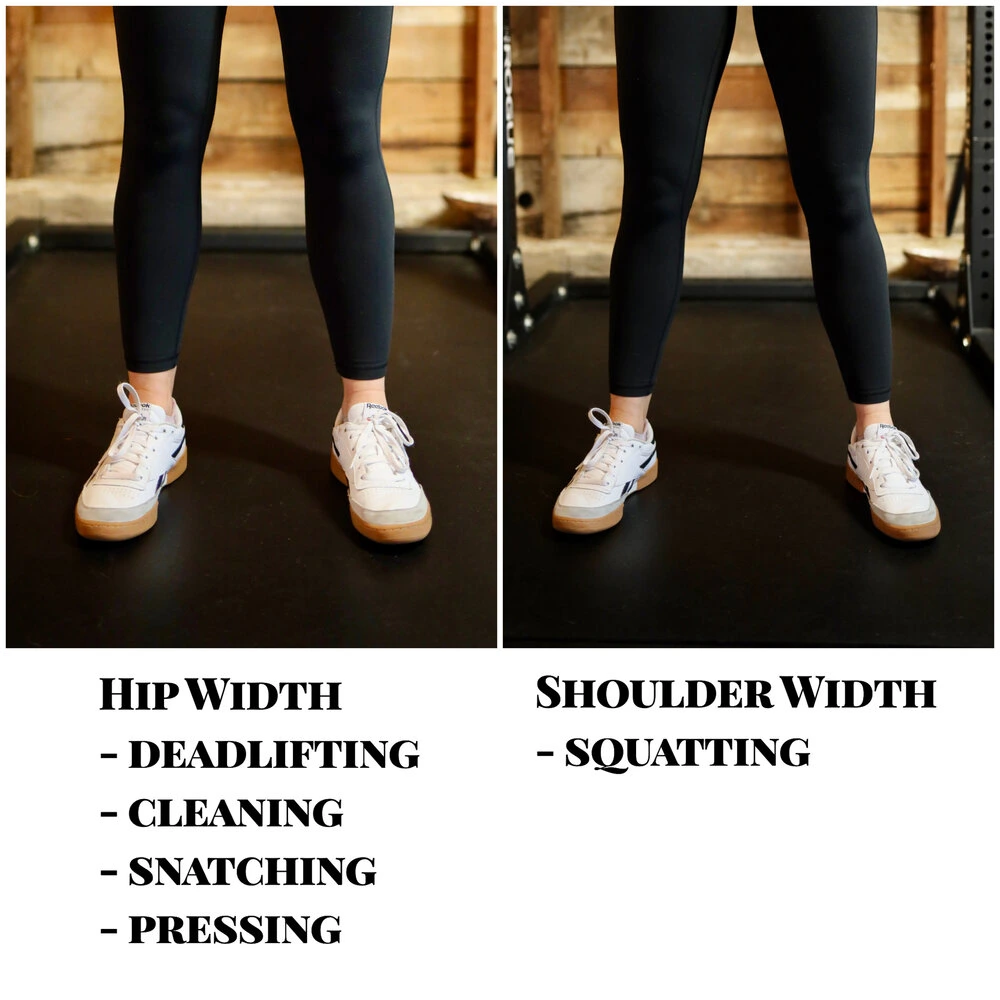
(Source: https://www.digitalbarbell.com/blog/2021/1/27/hip-vs-shoulder-width-amp-when-to-use-them)
Air Squats
1. Start with your feet shoulder-width apart. This is the most important part of your squat form. Your feet should be slightly wider than shoulder-width apart, with your toes pointing slightly outward. This will help you maintain balance and stability throughout the movement.
2. Keep your chest up. As you lower yourself into the squat (as low as you can go), make sure to keep your chest up and your back straight. This will help you keep your balance and ensure that you are using the correct muscles.
3. Push through your heels. As you come up from the squat, make sure to push through your heels. This will help you engage your glutes and hamstrings, which are the primary muscles used in the squat.
4. Squeeze your glutes at the top. As you come up from the squat, make sure to squeeze your glutes at the top. This will help you engage your glutes and ensure that you are getting the most out of the exercise.
5. Keep your core tight. Throughout the entire movement, make sure to keep your core tight. This will help you maintain balance and stability, and will also help you engage the correct muscles.
By following these tips, you can improve your squat form and get the most out of your squats. For a more challenging workout, you can hold a light weight in each arm as you perform these movements. When I do an air-squat, I try to pay attention to how my quadriceps and hamstrings feel. If there is some tightness, I try to make sure I am warmed up correctly and only when I feel comfortable lifting weights do I go for my sandbags. Listening to your body is key to avoiding injury. I found that the hard way!
Proper Deadlift Form for Maximum Results
Deadlifts, along with squats, forms the basis of functional fitness. Deadlifts is a total-body movement, where you engage the upper body to lift and hold the weight, the core to stabilize your body and the wright, and the lower body to power through the lift. It is an incredibly effective exercise that can help you build strength and power, and with the right form, you can maximize your results. Here are some tips to help you get the most out of your deadlift (use a small sandbag or barbell as you get started or to warm up):
1. Start with the right stance. Your feet should be hip-width apart, with your toes slightly pointed out. Your shins should be close to the weight (sandbag/ bar), and your back should be flat.
2. Keep your core tight. Your core muscles are essential for stabilizing your spine and keeping your form in check. Make sure to engage your core muscles throughout the entire lift.
3. Keep your shoulders back. Your shoulders should be pulled back and down, and your chest should be up. This will help you maintain a neutral spine and keep your form in check.
4. Drive through your heels. As you lift the weight make sure to drive through your heels and keep your back flat. This will help you generate more power.
5. Lower the weight slowly. As you lower the weight, make sure to keep your core tight and your back flat. This will help you maintain control and keep good form.
Give this a try and see if they help you improve your deadlift form and get the most out of your workouts.
Proper Push-up Form for Maximum Results
Push-ups is one of the foundation exercise to build overall fitness. It builds strength in the upper body, especially the triceps and chest. It also engages the core to keep your back straight. Simple enough to be performed by anyone anywhere, it also unfortunately easy to get wrong. Here are some tips to help you get the most out of your push-ups:
1. Lie face-down on the ground. Place your hand next to you by you chest, palms facing down. This will help you maintain proper form and balance throughout the exercise.
2. Keep your elbows close to your body. This will help you engage your chest and triceps more effectively.
3. Make sure your back is straight and your core is engaged. This will help you maintain proper form and prevent injury.
4. With your core engaged (tightened), push yourself off the ground. Keep your head level with your back (not dropping the head). Also try to visualize your glutes, back, and head being in a straight line.
5. After you straighten your arms, slowly lower your body until your chest is just above the ground, back to the starting position. This will ensure that you are getting the full range of motion for the exercise.
Next time you try push ups, try to keep these steps in mind. Hope you see some gains.
Conclusion
Getting proficient in these three basic exercises ensures a more complete and fulfilling fitness journey. The tips provided are from various health sources and research. So pay attention the next time you do these movements. You might be surprised of the impact it might have on your training.
Hope you found this helpful. Check out my other posts as well.

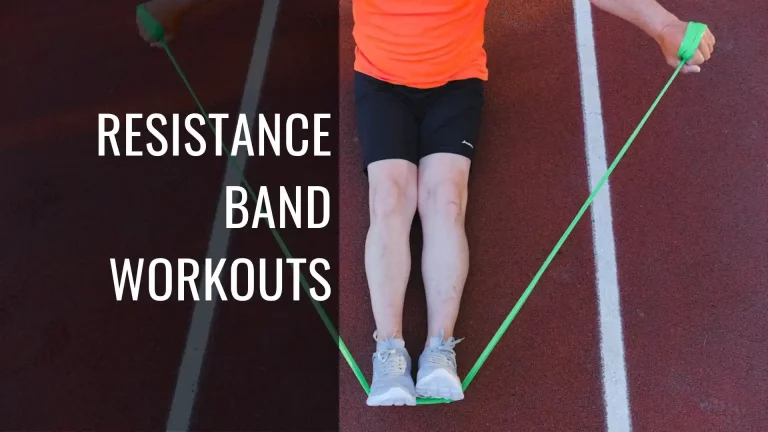
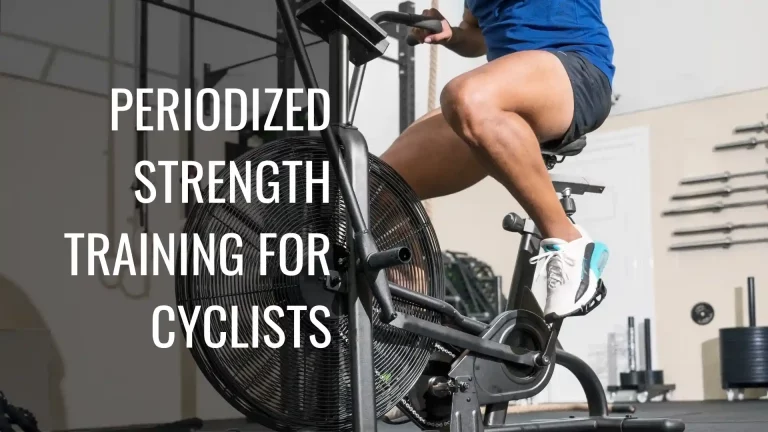
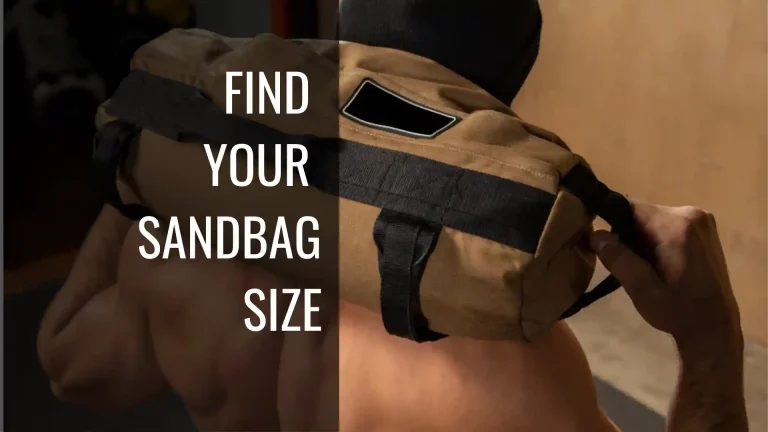
[…] – People tend to not watch their form when lifting weights, especially when lifting heavy. A proper form ensures and more efficient lift and reduced or avoid pain and discomfort. People tend to pay […]
[…] you lift weights, follow proper form to get the most from your workouts, and stretches to prevent […]
[…] using proper form: This can lead to injury and hinder your progress. See here on guidance for proper […]
[…] Proper Form – Maintaining proper form during a workout ensures your body mechanics (muscle and bone alignment) can safely take on a heavy […]
[…] lift engages all the posterior chain muscles from the neck all the way down to the ankles. Maintain a proper form to avoid any […]